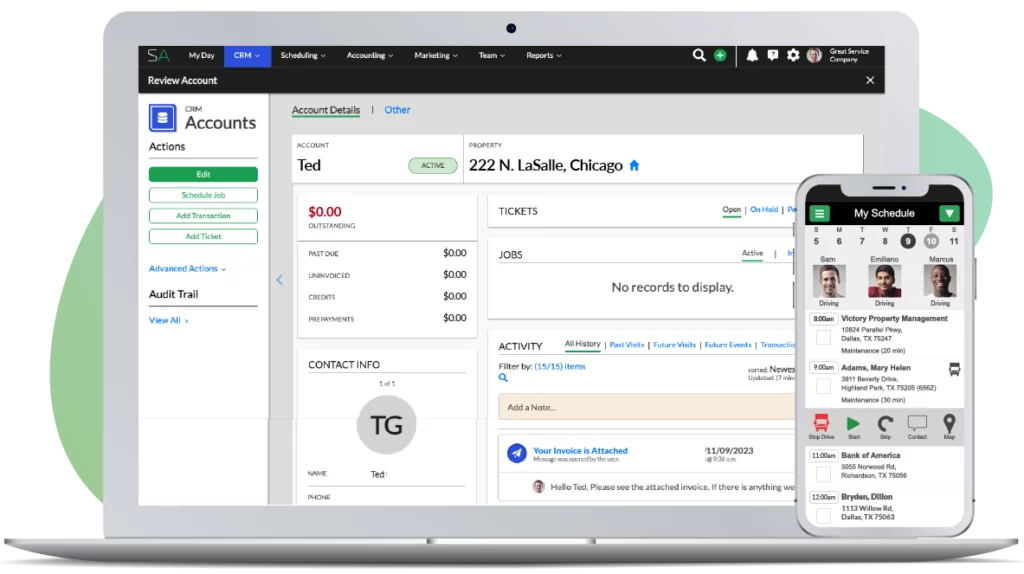In this interview with Jonathan, Martha shares her best tips on how to reward employees for performing their top quality work.
Jonathan: Got another interview for you. It’s with Martha. It’s one of five. Don’t discount her. She’s in the residential cleaning space. She has multiple locations. What an incredibly difficult business. Could you imagine sending your team in to your client’s homes every day and every thing they did was nit picked and every time they lost something you were accused of stealing it or they were accused of stealing it. She’s got a lot of great advice and she’s got a lot of value. Check out what she has to say.
Tell me about your reward program for employees that are achieving a very high level of quality.
Martha: Okay.
Jonathan: You’ve got an entire fifth … Not only do you have the system built for quality tracking, but you also have a system to reward the employee based on the result. Is that correct?
Martha: Exactly.
Jonathan: Okay, so, tell me how that works.
Martha: I may be too much of a carrot on a stick person. I like incentive based rewards. For me, I knew I needed my employees to care about the quality. I needed a way that they felt like they got something out of it. I mean, we’ve all had top performers and then mediocre performers. In my old system they were rewarded the same way. I mean they basically got … They didn’t really get the same pay because we did do performance evals. They would get the same benefits and so forth.
The way that I do it now is in our company we award our paid days off based on quality scores. We’re a maid service. We don’t do 20 jobs a day like in the lawn care world. A team of 2 is doing 3 to 4 jobs a day. A team of 1 is doing 2. I’m giving you those numbers so you can have some type of comparison. Sixty excellent ratings equals a paid day off in our company. In my old system, after they’d been with me a year they got a week. Then after three years, two weeks, and so forth. What I didn’t like is having somebody who was pretty average, they weren’t fireable, but they weren’t awesome. I just hated to pay them a weeks vacation and then there’s this other person who is a top performer and is getting the same.
Again, I had a friend actually that I got this idea from. It was successful in their company so I started this process where they earned their paid days off. That has been a huge motivator. There’s nothing that my employees want more. They may say more pay, always are going to say higher pay, but with the age groups that we have, paid days off are huge for them. The other thing I like about it is, since they’re earning a day at a time they take a day at a time, too. They don’t take a week off at a time unless they’re saving for a special vacation or a maternity leave or something like that. Anyway, that works really well for us.
Jonathan: That’s a good point.
Martha: Mm-hmm (affirmative). I love that. I mean rarely do they take more than one or two days at a time so it’s easier on the company.
Jonathan: Yeah, when I think of the idea of someone mid-season wanting to take a week off, that’s scary.
Martha: Mm-hmm (affirmative).
Jonathan: Because we need them. That’s really smart.
Martha: Right. That’s the main benefit around quality that is, I mean gosh, that’s my selling point for employment ads and everything. We have others that are popular as well. We do a …
Jonathan: Don’t you do that spinning wheel? Or you have something where they can win a prize if I remember correctly.
Martha: Right. Right. Again, we are mainly girls so you would have to modify this to what works for the men. Although I have men that work for us, but it’s like a Price is Right wheel. I think I ordered it off Amazon or Ebay. You can write in the prizes. I have things like oil changes and movie tickets, restaurant gift card, I have a $100 off a utility bill or rent. There’s all kinds of things that range from $10 to $100.
Then they earn spins. Again, we’re on a scale of 4. If their total monthly average was a 3.65 or better they earn 1 spins. If their monthly average was a 3.75 or better they actually get 2 spins. That’s hard to do. We don’t have … It’s maybe 5% of the company that is getting the second spin. Although that number is actually increasing. You know, it’s just viral that they … I can say I love it because it really is almost self maintaining. You just build in the system and, you know, you get the clients to buy in, you get the employees to buy in, and it just makes it easier on me as the owner and of course the office staff that deals with those calls.
Jonathan: Between this reward program where, clearly, the team benefits and the tracking, which at the end of the day it’s all really about the reward program or it’s about getting the quality up. The team member benefits through the reward program, because they can benefit in this way and they like what you’re doing and they’re bought in, have you seen … Has this process had any impact on retaining your team members? I don’t know if you’re able to measure …
Martha: Absolutely.
Jonathan: Okay. Okay. What have you experienced?
Martha: It really has. Again, I’ve had a little bit of a change in management so, you know, it’s hard to know which one caused the change. What I see is that if we have somebody who just can’t make it in our quality system they’re going to get weeded out within the first couple of months. Their scores are going to be in probation very quickly. It absolutely is telling. They can either make it or they don’t. Then the ones that make it, they love it, because you’re actually rewarding them for high quality work. They’re not being evaluated the same. They get feedback every day and that is another thing that really helps them …
Jonathan: That’s a pretty big deal.
Martha: Exactly. It’s been an indirect … It wasn’t on my bullet points of benefits, but we know that it’s very important to get feedback frequently. Not just the negative, but the positive. What I love about this system that I have now, they’re looking at their phone or on the computer at these scores that roll in and they have comments attached. Like I was saying, just pushed ten of them today and it says, “So and so is wonderful. I would love for him to come and clean our home,” or, “This team makes my day great.” It’s real affirmation of the work that they do. It’s something that I would never be able to give them that kind of feedback that frequently. Now they just get it. I love it.
Jonathan: I never thought of that. That’s actually a really big deal. That’s pretty cool.
Martha: It really is.
Jonathan: My last question around this is related to … I have no idea what the answer is going to be to this, but let’s say you have somebody on the team that is under performing and you know it in advance. Because they’re getting poor scores. They know about the poor scores and maybe you’ve put them on probation. Someone that’s under performing consistently and they see it. Are they more likely to leave the company on their own? Is there any change there or … For example, if … I’m going to make something up. Let’s say you had to fire 4 people a year because they just couldn’t make the cut. Since implementing something like this, is it now a scenario where 2 people just quit on their own? You don’t even have to fire them now and it only leaves you with a couple people you have to deal with? Is there any change in that area or is it about the same?
Martha: It is … They probably do self exit more than they used to. Everything is really driven around the data. It’s very transparent. I mean, it’s so transparent in my company. You know if you’re headed down the wrong path. They know when they can get a bonus and they know when they’re going in probation. So, yes. The writing is on the wall. I do occasionally get that employee that says, “Well, you assigned me to the bad jobs.” We have that conversation. I definitely have my answer for that. It does. It really weeds people out. They know what’s expected of them. There is no guessing. They have their peers that they can see how they’re doing.
In the system that we have, you can actually set it up to where you can give an employee what we call “view all” so they can see everybody in the company. They can’t view quiet information and things like that, but they can see everybody’s performance. Depends on how you set it up. I’m on a view all. I believe in some peer pressure. Amazingly, my teams get along. I mean it’s just the way it is. The other nice thing is I have had to do an unemployment claim since I’ve set up this system. I’ve had to do a few. You just print off those reports and that’s all.
Jonathan: Oh, gee. That’s really interesting.
Martha: From the client and it’s just hard, cold facts. I’ve even been …
Jonathan: That’s pretty interesting.
Martha: Right, with the person from unemployment and they just kind of laugh and go, “Okay. We got what we need.”
Jonathan: Wow. I never thought of that. That’s pretty cool. Okay.



